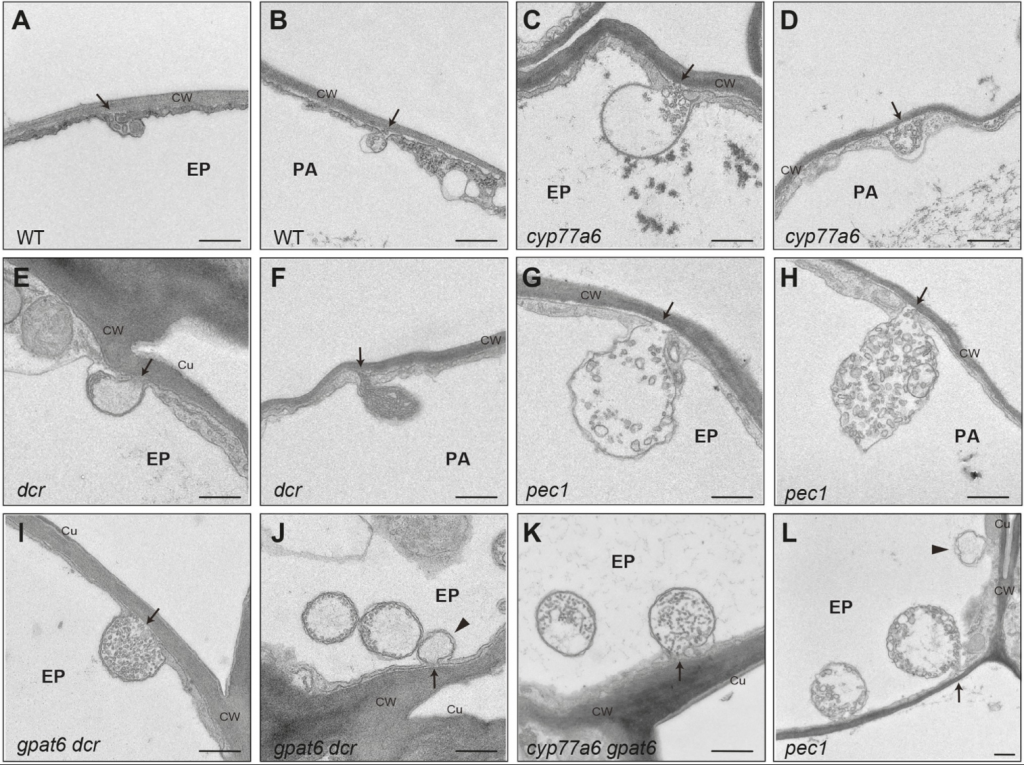First publication of the year!
Front. Plant Sci., 05 January 2022
Trafficking Processes and Secretion Pathways Underlying the Formation of Plant Cuticles
Glenn Philippe1, Damien De Bellis2,3, Jocelyn K. C. Rose1 and Christiane Nawrath2*
1Plant Biology Section, School of Integrative Plant Science, Cornell University, Ithaca, NY, United States
2Department of Plant Molecular Biology, University of Lausanne, Lausanne, Switzerland
3Electron Microscopy Facility, University of Lausanne, Lausanne, Switzerland

Cuticles are specialized cell wall structures that form at the surface of terrestrial plant organs. They are largely comprised lipidic compounds and are deposited in the apoplast, external to the polysaccharide-rich primary wall, creating a barrier to diffusion of water and solutes, as well as to environmental factors. The predominant cuticle component is cutin, a polyester that is assembled as a complex matrix, within and on the surface of which aliphatic and aromatic wax molecules accumulate, further modifying its properties. To reach the point of cuticle assembly the different acyl lipid-containing components are first exported from the cell across the plasma membrane and then traffic across the polysaccharide wall. The export of cutin precursors and waxes from the cell is known to involve plasma membrane-localized ATP-binding cassette (ABC) transporters; however, other secretion mechanisms may also contribute. Indeed, extracellular vesiculo-tubular structures have recently been reported in Arabidopsis thaliana (Arabidopsis) to be associated with the deposition of suberin, a polyester that is structurally closely related to cutin. Intriguingly, similar membranous structures have been observed in leaves and petals of Arabidopsis, although in lower numbers, but no close association with cutin formation has been identified. The possibility of multiple export mechanisms for cuticular components acting in parallel will be discussed, together with proposals for how cuticle precursors may traverse the polysaccharide cell wall before their assimilation into the cuticle macromolecular architecture.